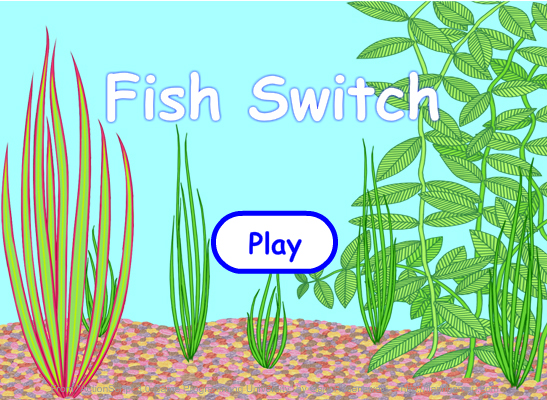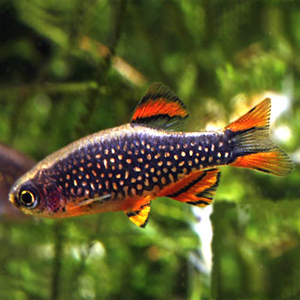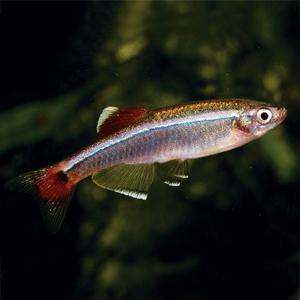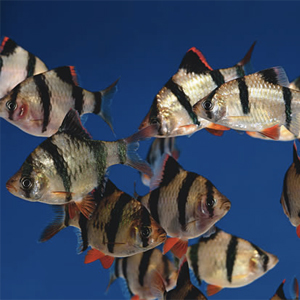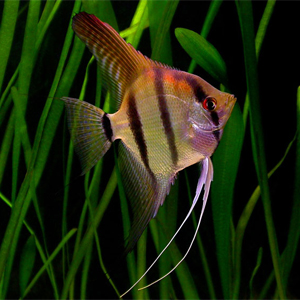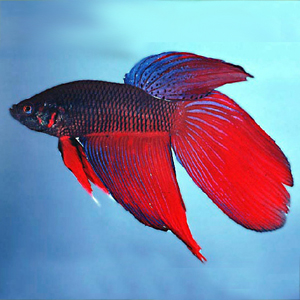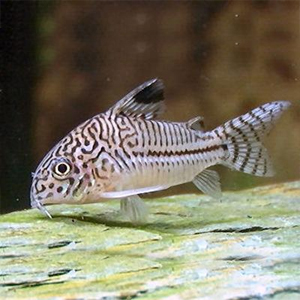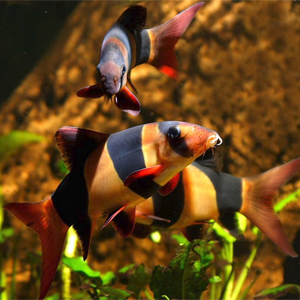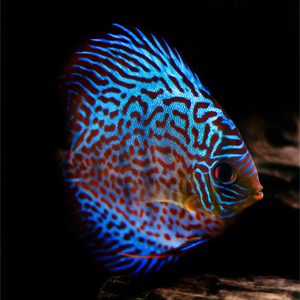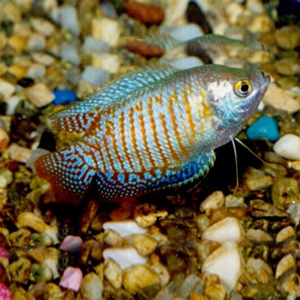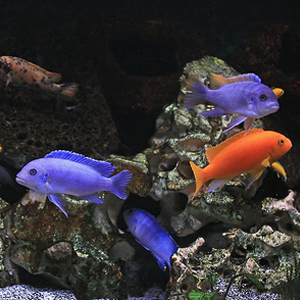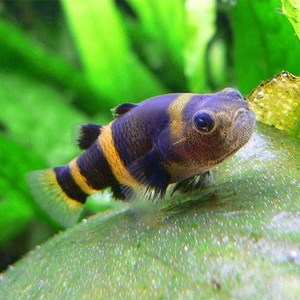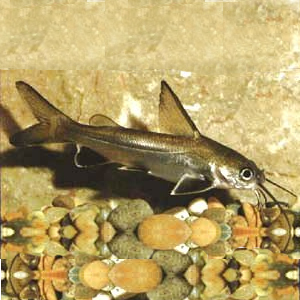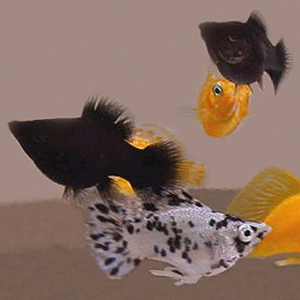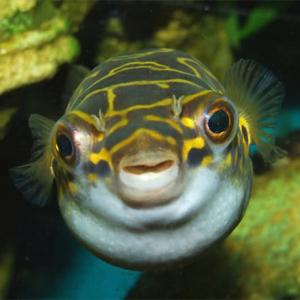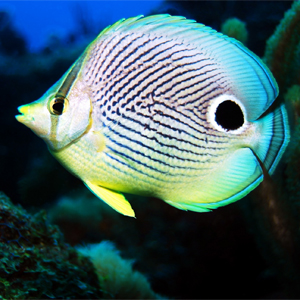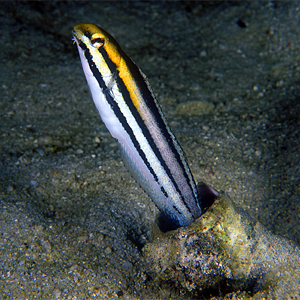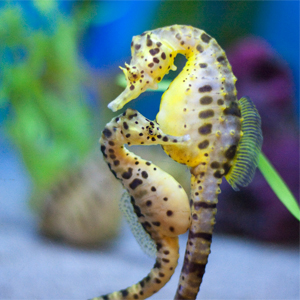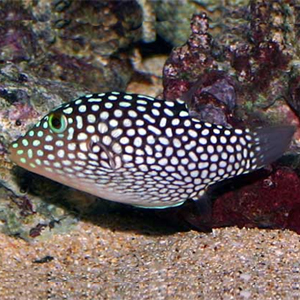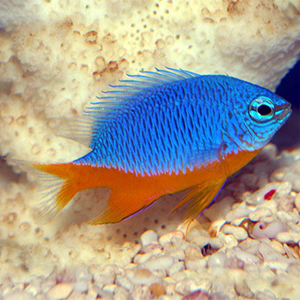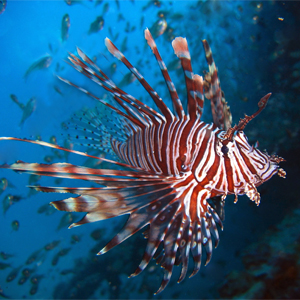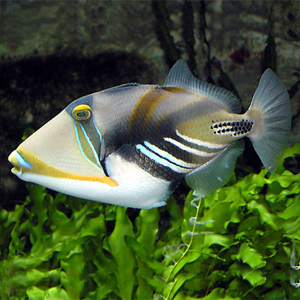Fish.
On this page you can learn about fish or have some fun playing Fish Switch, the fish matching game. Fish are great pets; anyone can have them even people with allergies!
There are three different basic aquarium setups; saltwater, freshwater and brackish aquariums.
Fresh Water Fish
The most common type of fish kept as pets are Fresh Water fish. These fall into two categories Cold Water and Tropical.
Cold Water Fish
Gold Fish
Goldfish are one of the most popular freshwater aquarium fish species kept in home aquariums all over the world. They come is variety of shapes, colors and currently there are more than hundreds of goldfish varieties crossbred and produced as ornamental fish. Their graceful movements coupled with their bright coloration and fancy features, often makes them the first choice of fish among hobbyist
Pearl Danio
This fish is very hardy and easy to care for. It will tolerate temperatures into the mid 60's without difficulty, and is easy to find. They are larger than zebras, but need not be kept in schools.
White Cloud Mountain Minnow
One of the easiest fish to care for, a new gold colored variant has become very popular. They do best in cooler temperatures, although very low temps will lessen their attractive coloration.
Barbs
Several readily available species of Barbs are tolerant of temperatures into the mid sixties, or even lower. All are easy to care for, and are suitable for a community aquarium. They include: the Gold Barb (Barbus schuberti), the Green Barb (Barbus schuberti), the Rosy Barb (Barbus conchonius), and the Two Spot Barb (Barbus ticto).
Tropical Fresh Water Fish
Freshwater Tropical Fish generally are the fish found in tropical countries like for example the Amazon River in South America or Lake Tanzania in Africa. Domesticated tropical fish as compared to their cousins in the wild are usually more attractive and colorful. This is due to selective breeding done by aquarist with some other fish species
Angelfish
Angelfish is very territorial and as such they require large tank size measuring at least 50 gallons and above if you plan to keep 2 to 4 angelfish. They can grow up to six inches in height and because of their aggressive behavior and incompatible nature with other fish; angelfish should only be kept with its own species.
Betta
In South East Asia Betta splendens is traditionally kept as a fighting fish. The Bettas kept in Asia as fighting fishes were brown with a tinge of green and their fins were much smaller than the fins that we can see on the aquarium kept Bettas of today Male Betta splendens are highly territorial, and when put together in the same container they will fight until one of them dies. In the wild, a weaker male can always choose to leave the territory before he becomes deadly injured, but this is naturally impossible in a small fish bowl or aquarium.
Catfish
Corydoras belong to the armored catfish family . Corydoras are a type of catfish, and many different species are today kept by aquarists. Corydoras, or Corys as they are affectionately called by their keepers, are peaceful and can be kept in tropical community aquariums. They are active and entertaining to watch, and can become very old in the aquarium if you provide them with favourable conditions. Do not be surprised if your Cory accompanies you for 15-20 years.
Clown Loach
Clown loach is a very friendly and active fish, which are suitable to be kept in community aquarium together with a school of five or more larger fish, complete with plants, rocks and driftwood for them to hide. They usually grow up to 6 inches in length when kept in captivity
Discus
Discus Fish is the native of the Amazon river and they thrive in hard water between 7 to 10dGH with slightly acidic environment. They are very shy and docile fish, which are best kept with their own species. Today, most home aquarium discus is no longer wild variant but instead, they are tank bred to produce different species with desirable characteristic. Some of the common species are Red Phoenix, Blue Turquoise, and Pigeon Blood.
Gourami
Gouramis are commonly found in community aquariums since they are peaceful creatures that can be kept with each other or together with other docile species. It is advisable to choose tank mates that have roughly the same size. You can keep plenty of Gouramis of the same species, or from different species, in the same aquarium as long as there is room for them to form their own territories. Use plants and/or other aquarium decoration to form natural borders in the aquarium.
African Cichlid
A large aquarium with plenty of caves and hiding places is ideal for these fish. An aragonite-based substrate is recommended in order to maintain the necessary high pH and alkalinity. The most colorful freshwater fish in the world have been labeled as "aggressive" but please don't let that intimidate you. African cichlids are easy to keep and very hardy just don't go throwing guppies in with them and all should be well. Feel free to mix Mbuna with Haps and Peacocks and Victorian cichlids to make that perfect show tank. Tanganyikan cichlids can be easy too.
Guppy
These fish are undoubtedly one of the most popular in the aquaria hobby. They come in a massive variety of spectacularly colored strains. Many fish or pet stores recommend these fish as suitable for first time fish owners. They are easy to look after. The Guppy is a very hardy tropical fish that is also a very prolific breeder. The male guppy is easy to distinguish from the female guppy because the male is usually more colorful with extremely colorful and large caudal fins (tails). The female is usually larger, thicker bodied, with less color and a smaller caudal fin (tail).
Brackish Water Fish
These type of fish live where Salt Water and Fresh Water come together, such as a the mouths of rivers where they flow into the Ocean or in Tidal Marshes.
Archer Fish
These are brackish water fish that can adapt to living in either freshwater or saltwater. In their natural habitat Archer Fish are often seen swimming just under the water's surface, shooting drops of water from their mouths to knock insects down onto the water's surface, where they can be eaten. Archer Fish will often perform this magic trick in an aquarium, if insects are above the water.
Gobies
These are bottom dwelling fish that are energetic, mildly aggressive/ territorial, and have huge appetites. The Bumblebee Goby requires a diet rich in small, live foods such as tubifex worms, bloodworms, brine shrimp and daphnia.
Black Fin Shark
Also known as ,the Columbian Shark this is a catfish which will grow quite large in an aquarium. It may also be referred to as Jordan's Catfish or the West American Cat Shark. The Black Fin Shark has a high fin and long "whiskers" that gives it a classic catfish appearance.They are energetic scavengers that constantly scour the bottom for uneaten bits of food, and in this way they help improve the water quality, but they are not a substitute for proper aquarium maintenance.
Mollies
Mollies are well suited for the community tank because of their peaceful nature, and are compatible with other peaceful, large fish that can withstand similar water conditions.
The pointed anal fin and much larger dorsal fin on the male, and the rounded anal fin and pregnancy spot on the female differentiate the two. The Molly is a livebearer that requires a spawning box in a 25 gallon, or larger breeding tank.
Puffers
The ideal aquarium will have brackish water with many plants (either real or plastic), rocks with plenty of hiding places, and a sandy bottom composed of an aragonite-based sand. The Figure 8 Puffer can be aggressive to members of its own species, so care should be taken when housed together.
Salt Water Fish
Salt Water Tanks are not for beginners and careful study is required before undertaking the set up of a Salt water tank. Most Marine fish have very specialized diets and water quality needs.
Butterflyfish
Butterflyfish reach an adult size of six inches in captivity. The captive care of this group of fish varies a great deal due to the special feeding requirements (live coral polyp) of some species. A large tank with ample hiding places is needed to successfully maintain some species.
Blennies
Blennies reach a size of three inches and are typically bottom dwellers. Blenny Fish are somewhat territorial in nature, and only one species per tank is recommended. Extensive rockwork and a good growth of microalgae are necessary to successfully maintain them in captivity. Generally found amid crevices and rocks on the bottom of its environment, the Bicolor Blenny needs a tank of at least 30 gallons with scattered rocks for perching and hiding.
Dottybacks
Dottybacks, also known as Pseudochromis, are brightly colored, and reach a size of three inches. They are very hardy aquarium specimens that adjust well to captivity. Dottybacks feed on plankton, small crustaceans, worms and will accept most prepared foods. The aquarium should include a well-sealed lid, and plenty of rockwork and hiding places. Only one species should be maintained in an aquarium.
Clownfish
The average size of Clownfish is three inches and most are brightly colored with white stripes on the head or side of the body. This group of fish is extremely hardy, and is well suited to life in the average aquarium. Ideally, Clownfish should be purchased in small groups consisting of one species, and introduced to the aquarium simultaneously.
Seahorses
Seahorses are relatively hardy and adjust well to life in captivity if maintained in water conditions with low current and plenty of branching gorgonias, algae, or coral decorations. Because Seahorses have difficulty competing for live food when other fish are present, these fish are best kept in a tank containing only Seahorses and Pipefish.
Puffers
Most species of Puffers reach approximately eight inches in length with the exception of the Canthigaster Puffers, which reach an average size of only three inches. Puffers are relatively hardy and adapt well to captivity if provided with swimming room, a varied meaty diet, and a few hiding places.
Damselfish
The average size of most Damselfish is two inches. They are often used to break in or cycle new aquariums. The majority of these fish are highly territorial, and may become aggressive toward other tankmates. They do well in groups of the same species.
Lionfish
The size of these fish varies, but most members reach an average length of seven inches in captivity. Lions and Scorpions are hardy fish that adapt well to life in captivity. They usually prefer live foods in captivity, but some species convert to frozen foods quickly especially when young. Provide these fishes with ample hiding places and an appropriately sized aquarium for the species.
Triggerfish
Triggerfish are very hardy specimens that adapt well to aquarium life if provided with a large tank and ample hiding places. Triggerfish reach an average size of six to ten inches in the home aquarium and often become very aggressive toward the same species and other tank mates. Smaller Triggers grow quickly, and are usually more docile in adulthood than if matured in the wild.
Some more great sites to check out!
